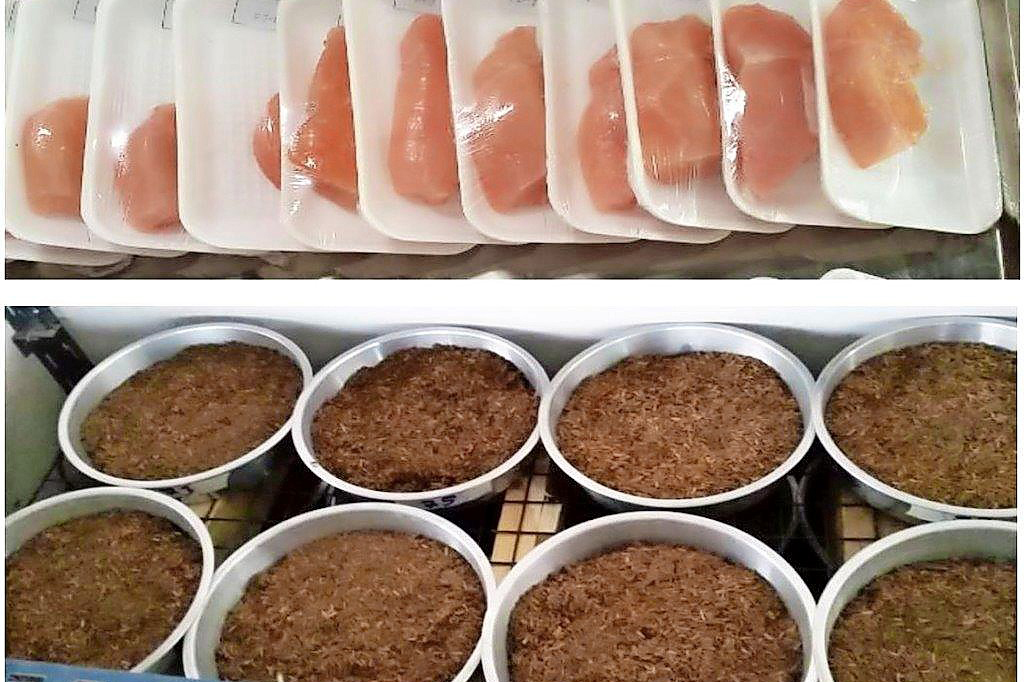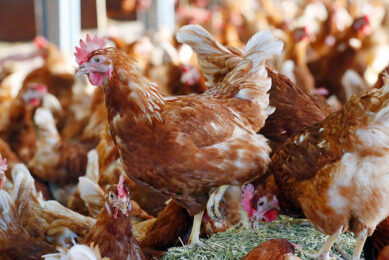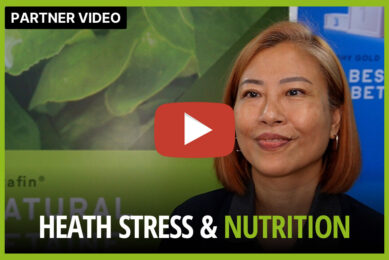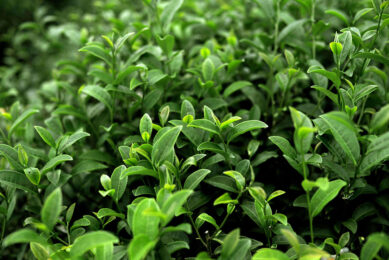Managing broiler gut health with natural betaine

Maintaining eubiosis in the gastrointestinal tract is the key solution for promoting growth performance and profitability in livestock production. A trial in challenged conditions showed the strength of betaine, and naturally sourced betaine in particular, as a nutritional aid to manage gut health in broilers.
Several potential benefits on broiler carcass quality, like lowering carcass fat content and increasing breast meat yield, are attributed to betaine. Betaine is obtained from partially desugarised (sugar) beet molasses via ion exclusion (a chromatographic separation process), which enables the separation of the molasses into three different fractions, one of which is a natural, betaine rich fraction. Courtesy of its formula, (CH3)3N+CH2COO- with three methyl groups and its bipolar structure, betaine is a multi-functional nutrient (often termed as Vitamin B10), acting as the most efficient methyl group donor and as an organic osmolyte, with direct influence on the gastrointestinal tract (GIT) functionality and health.
Methyl groups are vital as they are involved in a variety of metabolic processes including protein synthesis, hormonal signalling, neurotransmission, cell growth and membrane integrity. With the latter two playing a major role in gut integrity and functionality. Since vertebrates are unable to synthesise methyl groups, these need to be provided via the diet. Potential dietary sources of methyl groups: betaine, choline, methionine and folic acid are not equally available for use in methylation reactions. Most of dietary methionine is needed for protein synthesis, while choline is predominantly used in cell membranes and neurotransmitters.
Choosing the right source
Nowadays, there are many products to choose from, both natural and synthetic. Thus the question for many producers is how to proceed, by choosing a naturally sourced product or a chemical synthetic product. Synthetic products e.g. betaine- hydrochloride and choline-chloride may, besides the content on inorganic ions, contain higher Trimethylamine (TMA)
levels (up to 10-25 times higher than naturally sourced betaine). TMA can have a negative influence on the quality of end-products e.g. fishy eggs or fishy tainted meat.
Due to its zwitterionic structure, betaine plays a significant role also in the osmoregulation, respectively in osmo-protection. As a ‘compatible’ osmolyte, betaine can replace on demand the ‘perturbing’ inorganic ions, whose concentration levels may affect protein structure and enzyme functions. In addition it can minimise the water loss from cells, maintaining the cells’ volume, structure and activity; thereby conferring them higher resistance against stressors.
Both functions of betaine play a key role especially when animals are under challenged conditions including dietary changes, heat stress, temperature stress (between day and night temperatures) and pathogenic challenges (mainly coccidiosis) often with wet litter as a consequence. This in turn can lead to further severe complications like respiratory disease or pododermatitis. In such conditions, the demand on methyl groups is considerably increased, the mineral and water balance might be disturbed and the cell wall integrity potentially damaged.
Energy is one of the major dietary cost factors in poultry production and osmoregulatory responses are high-energy consuming processes. Betaine, being involved in the energy metabolism, can reduce the energy required for the osmoregulation. Under normal conditions, the saved energy can be used for increased animal performance and improved carcass quality. Whilst in challenged conditions, it may alleviate consequences by leading to fewer digestive disorders and lower mortality – thereby a better production efficiency.
Thai poultry litter study
Betaine is of particular interest for poultry because of the birds’ short life cycle and growth intensity. A recent study in Thailand conducted in cooperation with Saksit Srinongkote (animal research consultant) underlines the aforementioned aspects by showing the effects of different methyl group donors on the carcass quality of broilers in challenged conditions and the effect on the litter quality. Four hundred newly-hatched male broiler chicks (Ross 308), were randomly allocated to five treatments with eight replications using 10 male birds in a pen as an experimental unit.
A practical corn-soybean meal diet was formulated as the positive control (PC) diet, for each growing phase. A negative control (NC) diet, with 100 kcal ME/kg lower than that of the PC diet, was formulated for each growing phase. The test methyl group donor products were supplemented in the NC diet, at the same level of activity: 1000 mg/kg of complete feed, as shown in the treatment design below:
Diet 1: Positive control (PC) practical corn-SBM diet, according to Ross 308 nutritional guideline,
Diet 2: Negative control (NC) as diet 1, but with lower ME by 100 kcal/kg,
Diet 3: NC + Test betaine product 1 BET1 – ActiBeet L
(liquid, natural source of betaine produced by Agrana) 40%,
Diet 4: NC + Test betaine product 2 BET2 – crystallised natural betaine product 96%,
Diet 5: NC + Test product 3 CHOL3 – choline chloride 50%, synthetic product.
The test products were added to the experimental feed before pelletising. All diets were pelletised under a conditioning temperature of 80°C. To induce heat stress the birds were exposed to an ambient temperature of about 35°C by setting the water to run through the cooling pads only when the house temperature increased to above 35°C. Bad or unclean conditions were also provided by using 50/50% used/new litter. Dirty litter should facilitate mild GIT disorders in order to observe the effect of betaine under such conditions. Per pen, bodyweight and feed consumption were measured for growth, feed intake and FCR calculation. The trial was conducted over 38 days. Following bodyweight measurement on day 38, two birds from each pen were selected and slaughtered for carcass measurements (breast meat yield, thigh yield, drumstick and abdominal fat). On day 38, the litter in each pen was assessed by visual scoring. Additionally, a litter sample of about 1 kg was collected from each pen for litter moisture content evaluation (80°C for 24 hours). The data was subjected to analysis of variance as a randomised complete block design.
Encouraging results in challenging conditions
The results found that supplementation of methyl donor products did not significantly affect all of the carcass traits. Improvement in breast meat yield and lower abdominal fat content were observed by supplementing natural betaine products (Table 1). All methyl donor products improved the litter quality by reducing the score of visual litter assessment and the litter’s moisture content; better results were recorded by supplementation of the natural BET test products (Table 2). It is important to mention that considering the overall period (0-38 days), birds fed NC diet had significantly lower BWG and higher FCR than those fed PC diet. The supplementation of all test products improved BWG and FCR of birds fed the NC diet.
Gut health and litter quality are directly linked. Any challenge to the gut can often cause diarrhoea, resulting in increased nutrient and moisture excretion into the litter. Litter quality not only has economic implications but is also relevant to bird welfare. Based on litter score data, the positive effect of natural betaine in managing gut health is evident even in challenged conditions. As a multi-functional nutrient, betaine is a proven nutritional aid in managing gut health and for optimising the feed efficiency in broiler production.
References are available on request












